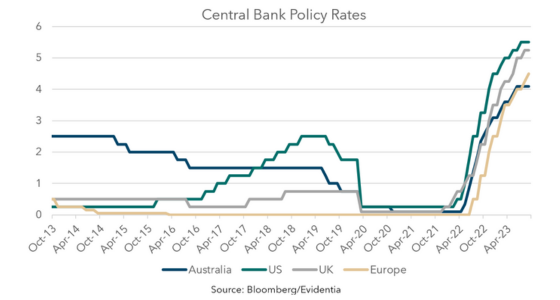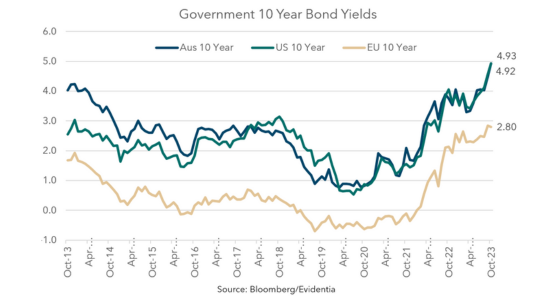Bonds: From Underperformance to Opportunity
Investors typically allocate part of their portfolio to high-quality bonds (fixed interest) for their low volatility, consistent income, and diversification from growth assets such as shares. Bonds are effectively fixed-term loans issued by governments, companies or other borrowers as a way of raising money. For lending money to a bond issuer, investors expect to receive regular interest (or coupon) payments over the bond's life and their principal (face value) back at maturity.
Although investors will generally receive the principal back at maturity, the price of a bond will fluctuate when traded on a market or exchange right up to its maturity date. A key driver of these price fluctuations is movements in interest rates, particularly for fixed-interest rate bonds. Bond prices and interest rates have an inverse relationship. When interest rates rise, prices on existing fixed-rate bonds tend to fall as investors prefer the higher interest rate available on newly issued bonds. The opposite is also true – when interest rates fall (or there is the expectation that interest rates will fall), the price of existing bonds tends to rise as their higher interest rate is more attractive.

What has happened to bonds recently?
The past 18 months have been a historically difficult period for bond markets, with very large price falls leading to negative returns for high-quality bonds (as seen in the table below). These movements were primarily caused by the significant rise in interest rates in response to high inflation worldwide.

One of the fastest interest rate hiking cycles in history led to one of the largest drawdowns for bonds in history, as inflation was exacerbated by several unusual factors, including:
- The COVID pandemic placed pressure on global supply chains.
- Pent-up demand during the pandemic and excess savings due to government support payments resulted in post-pandemic spending.
- The war in Ukraine drove energy and other commodity prices higher, fuelling inflation further.
Compounding all of this was that interest rates started at levels close to zero after central banks had aggressively cut them to support economies during the pandemic.

Where to from here?
This has led investors to question the role of bonds in their portfolios and whether they should continue owning them. We would caution about exiting bonds at this point in the cycle and believe the environment and outlook today are very different from 18 months ago. We have a much more positive view of bonds moving forward for several reasons:
- We believe most of the increase in interest rates around the world is now behind us. While the increase in interest rates led to declines in bond prices, bond yields (the return an investor expects to receive each year over its term to maturity) are much higher than two years ago.
- Current bond yields tend to be a good indicator of future bond returns. After significant interest rate rises, bond yields are at the highest level they have been in over a decade (see chart below).
- Bonds tend to perform strongly and provide good portfolio diversification when economic growth slows. We expect to see a slowdown in economic growth as the impact of higher interest rates begins to affect households and businesses. In this sort of environment, interest rates can fall, which leads to prices rising for bonds

There is no doubt that bonds endured a very challenging 2022, which was disappointing for investors. However, we would warn against focusing too heavily on the rear-view mirror when investing. We believe the experience of 2022 is unlikely to be repeated, and the outlook is much brighter for bonds moving forward.
If you have any questions, please do not hesitate to reach out to your adviser.


